
11 minute read
Irving Fallen Firefighters Memorial
A memorial service was held at the Irving Veteran’s Memorial Park on Sunday, Oct. 7, 2018, in conjunction with the National Fallen Firefighters Memorial Weekend to honor firefighters that have died in the line-of-duty. The IFD commemorated the lives of the two Irving firemen who gave the ultimate sacrifice.
Firefighter James Pressnall – first firefighter to die in the Line-of-Duty since the IFD fully organized in 1953. Suffered from second and third degree burns to more than 65% of his body when a roof collapsed on him while battling a fire in an apartment complex that was under construction.
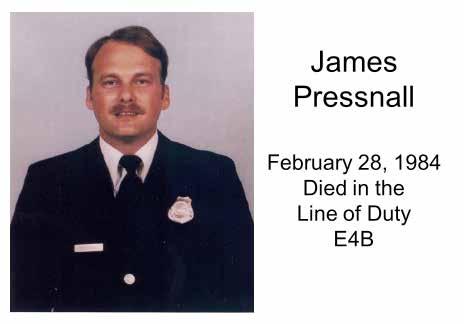
Driver Wendell McCluer – 23-year veteran Irving Firefighter died in the line-of-duty as he was assisting a motorist on the highway. His death was not originally categorized as a line-of-duty death until Nov. 29, 1990, when a hearing officer determined his death was covered under the provision of the Omnibus Crime Control and Safe Streets Act of 1968.
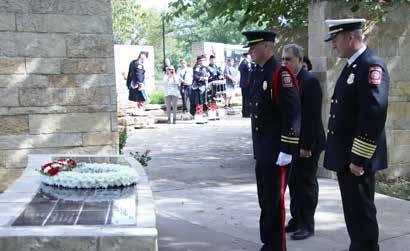
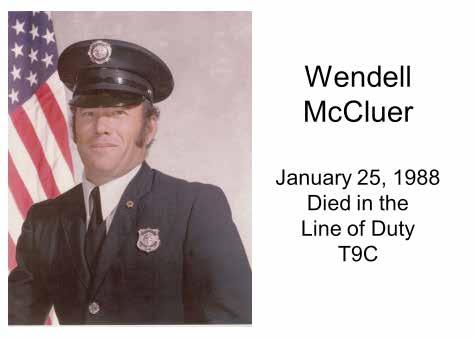
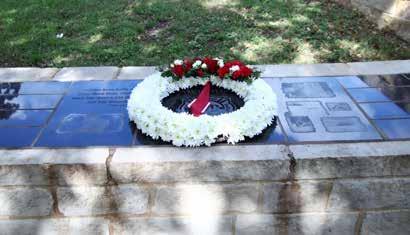

Administrative Division

Lead by Assistant Fire Chief Jack Taylor
Property Room: Responsible for all supply and inventory control activities. The property room has a property manager and property technician assigned to it. Duties include, but are not limited to, requisitioning, receiving, inventorying, stocking, and issuing EMS supplies and medications, fire station supplies, tools, uniforms, protective clothing and equipment for 369 personnel and 12 fire stations. Prepares and develops specifications for bidding purposes and maintains inventory records.
Emergency Medical Services: The IFD staffs 10 Mobile Intensive Care Units (MICUs), with a minimum of two paramedics. The MICU staff provides treatment and/or transport for medical emergencies to hospitals in Irving and adjoining cities. All 12 fire engines and all five aerial ladder trucks are staffed with a minimum of one paramedic and are supplied with all the tools necessary to provide Advanced Life Support (ALS). The IFD has 228 paramedics and 97 EMT (Emergency Medical Technicians) rated personnel.

RETURN OF SPONTANEOUS CIRCULATION (ROSC) Percent of patients that received cardiopulmonary resuscitation by emergency personnel and pulse obtained prior to, or at hospital.
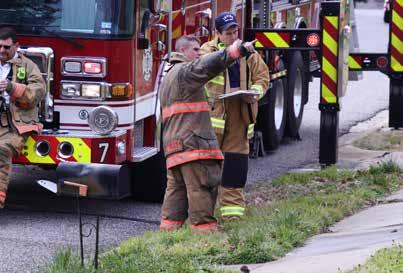
National Average* 12.0 %
2018-19 24.0%
Administrative Division

Lead by Assistant Fire Chief Jack Taylor
Fire Prevention: Responsible for Fire and Life Safety Code Enforcement, Fire Prevention Education and Investigation of fires. Comprised of 18 State of Texas Certified Inspectors/Investigators including the Fire Marshal, Assistant Fire Marshal and three Fire Prevention Lieutenants.
Citizens Fire Academy: Residents get an opportunity to learn more about the IFD by participating in the Citizens Fire Academy which is offered twice a year. Through this program, residents can get hands-on experience of the fireman’s day-to-day job. There have been 34 classes graduated with more than 380 participants to date. After completion, residents can sign up to become Alumni members and help the department by volunteering at events and helping at fire scenes.
The Citizens Fire Academy members assisted the IFD with Blue Christmas, Muscular Dystrophy Fill-the-Boot, Grey Matters to Firefighters, Pink T-shirts, department retirement and promotional ceremonies, other Citizens Fire Academy classes, safety fairs, Station-of-the-Month and emergency scenes totaling more than 3,400 volunteer hours.
FIRE PREVENTION ACTIVITY • Plans Reviewed – 1,821 • Total Permits Issued – 786 • Hazards Found – 4,833 • Hazards Corrected – 4,432 • Citations Issued – 26 • Investigations Conducted – 57 • Public Education Classes Conducted – 325 • Residents Reached through Public Education – 11,010 • Students Reached through Fire Prevention Week – 21,345
TYPE OF INSPECTIONS COMPLETED • Permit Inspections – 4,214 o Certificate of Occupancy – 1,079 o Fire Alarm – 482 o Fire Main and Hydrant – 157 o Fire Sprinkler – 802 o Hood Systems – 43 o Other – 790 o Reinspections – 861 • Code Inspections – 10,115 o Initial Inspections – 5,731 o Reinspections – 4,384
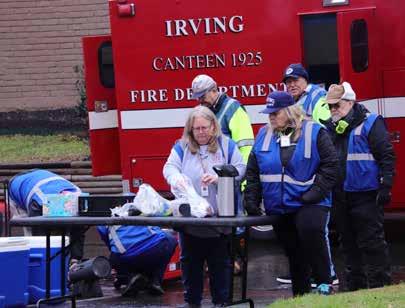
ARSON CLEARANCE RATE Percent of incendiary fires investigated and closed by exceptional means or by arrest.
National Average* 22.4 %
2018-19
* Per the FBI’s Uniform Crime Reporting Program.
50.0%

Lead by Assistant Fire Chief Richard Stewart
Suppression: The IFD responds to fire emergencies within the city limits. Mutual aid agreements with other Dallas County fire departments allow Irving to assist other cities when large or multiple emergencies exceed their capacity. These agreements also provide for assistance to the IFD, when needed. 324 uniformed personnel are assigned to the Emergency Services Division and operate on a 24-hours on-duty, 48-hours off-duty shift from 12 strategically located fire stations.
Specialty Teams Specialty teams have been created within the IFD to respond to special operation incidents such as a chemical spill, someone trapped in a trench or to a high-water rescue. These types of incidents require more specialized training, specialty rescue tools and specialty vehicles that are used at these incidents.
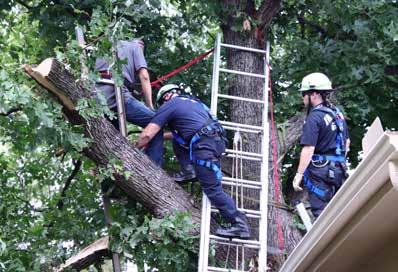
Haz-Mat: The hazardous materials response team consists of two in-service fire companies with two specialty support vehicles. Their primary function is to carry out tactical procedures needed to control or stabilize incidents involving hazardous materials. This team is assigned to Station No. 8 which has a Hazardous Materials Unit to respond in the event of a chemical spill or release.
Swift-Water Rescue Team: Texas weather often causes high-water conditions. The three lakes that are located in the city, the creeks, canals and the Trinity River provide firefighters with an opportunity to practice water rescue. The Swift-Water Rescue Team is a specially trained and equipped rescue team having the skills and tools necessary to make rescues in unusual situations dealing with water-type emergencies. This team is assigned to Station No. 1 which has a zodiac boat and trailer for swift-water responses, as well as Boat 8 on Lake Carolyn.
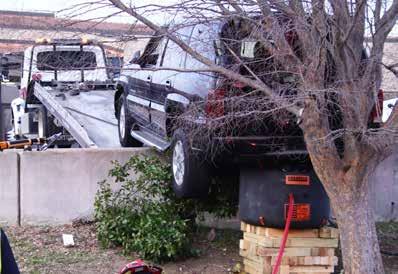
Technical Rescue: Irving’s firefighters have been trained in various types of technical rescues, such as high-angle rescue, trench rescue, heavy machinery rescue and vehicle extrication. This service provides rescue to victims trapped in hard to reach areas such as the bottom of holes, on building ledges, train trestles or window-washer platforms. The Technical Rescue Team is assigned to Station No. 6 which has a heavy rescue vehicle for technical rescue responses.

Lead by Assistant Fire Chief Richard Stewart
Specialty Programs Honor Guard: For more than 20 years, the IFD has been proud of all the members serving as ambassadors to the Fire Service Family, the activities of the IFD Honor Guard include, but are not limited to, marching in parades, ceremonial services, memorial services, opening ceremonies for conferences and city events. As members of the North Texas Honor Guard Society, the guard has proudly represented Irving and the IFD at events, memorials and funerals across the Metroplex and Texas. The goal is to provide a memorable tribute to the families of fallen, active or retired firefighters, with a commitment to excellence in a respectful and military manner.
Tactical Paramedics: A specialty team of tactically trained paramedics provide medical support to the IPD during tactical responses to increase public and tactical team safety. These paramedics respond to police incidents involving barricaded persons, hostage situations, active shooters, high risk warrants or other immediate life threatening tactical situations.
Bike Paramedics: When there are special events that occur outdoors within city limits, special requests are made for paramedics that have received bike training in addition to their normal emergency medical services training. These paramedics ride around on their bikes equipped with the tools necessary to provide immediate medical support when needed at events such as the Independence Day parade, Bike Fest and other events sponsored by the city.
CIVILIAN FIRE FATALITIES 2014-15 1 2015-16 0 2016-17 1 2017-18 0 2018-19 0 *No Fire Personnel Fatalities
PROPERTY SAVED 2016-17 – 99.3%, $472,754,306 2017-18 – 98.2%, $323,069,080 2018-19 – 98.7%, $339,752,945 According to Dallas County Appraisal District
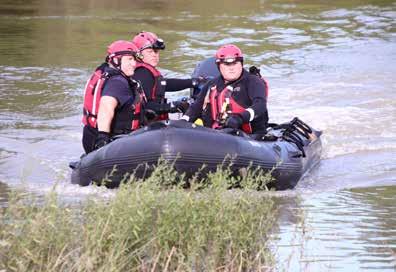
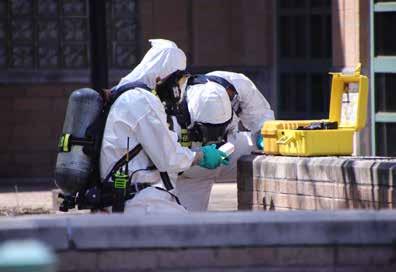
MEASURES • Average Fire Suppression Emergency
Response Time – 4:23 • Average EMS Emergency Response
Time – 4:21 • Calls processed by fire dispatchers within 57 seconds • 98.67% Property Saved from Fire Loss • 62% of High-Hazard Fire Inspections
Complete • 48% of fires confined to room of origin • 24% Cardiac Arrest Return of Spontaneous
Circulation

DISPATCH PROCESS TIME 2014-15 52 seconds 2015-16 56 seconds 2016-17 59 seconds 2017-18 55 seconds 2018-19 57 seconds
INCIDENTS BY RESPONSE TYPES EMS – 18,490 • Treated, Transported – 13,872 • Treated, No Transport – 1,426 • No Treatment, No Transport – 606 • Other – 2,586 Fires – 656 • Structure Fires – 259 • Car Fires – 179 • Grass Fires – 95 • Other Fires – 123 Specialty Teams – 224 • Technical Rescue – 166 • Tactical – 15 • Water Rescue – 7 • Haz-Mat – 36 Miscellaneous – 6,376 • Public Service – 1,763 • False/Good Intent – 3,905 • Other – 708 Total Number of Incidents – 25,746 Lead by Assistant Fire Chief Tony Harvey
Communications: The Irving Fire Department has a state of the art fire alarm office. Irving has been a part of 911 since the early 1980s. A computer-aided dispatch system was installed in 1994 to assist in the timely response to emergency situations. Four shifts staffed with one Lieutenant, one Fire Equipment Operator (FEO/Driver) and two Firefighters per shift work a 24/72 schedule handling the 911 call center for the department. The four shifts are under the supervision of the Battalion Chief of the Communications Division.
Chaplain: In order to meet the emotional and spiritual needs of IFD members and their families, a member of the IFD has been trained in Critical Incident Stress Management (CISM). Currently, Jonathan Hall serves as the chaplain for the IFD in addition to his normal duties as a Driver assigned to Station No. 2. He prepares the IFD through CISM training for crisis events, conducts CISM interventions after traumatic events, promotes the well-being of IFD members and enhances the overall image of IFD in the community.
The Chaplain assists IFD members and their families in times of crisis and other important events. The Chaplain will: • provide basic counseling. • provide CISM assistance. • act as IFD liaison to the community. • perform hospital visits for members and their families. • participate in community events. • speak at churches and youth meetings. • provide spiritual guidance when requested. • be a listening ear and a caring friend.
Certified Fitness Coordinators (CFCs): Trained firefighters, certified to improve and maintain the overall health and fitness of all fire personnel to ensure they are providing the highest level of service to the community. Currently 12 fire personnel serve as CFCs for the IFD in addition to their normal assigned duties.

Lead by Assistant Fire Chief Tony Harvey
Training: The Fire Training Academy is staffed by one Captain and one Fire Equipment Operator and the Joint Fire Training Facility is staffed by one Lieutenant and one Fire Equipment Operator who coordinate continuing education, as well as new product and refresher training for the Irving Fire Department. They also maintain state-required training records and manage the on-thejob training program for veterans. The Training Academy is certified as a Basic Firefighter Academy Facility with the Texas Commission on Fire Protection (TCFP) and has the capability to train future recruits for certification.
The IFD exceeded all training requirements mandated by the TCFP, Department of Transportation, Texas Department of Health Services and the Texas Commission on Law Enforcement Officer Standards and Education. Members completed a total of 56,958 hours of training.
During the 2018-19 training year, the IFD Training Division conducted and/or coordinated 3,647 classes to include the following fire training: • Live Fire Training Modules • IFD Officer Development • Firefighter Life Safety Initiatives • Firefighter Task Test • Pre-Incident Planning • National Fire Protection Association Modules • National Incident Management System Refresher • Texas A&M Engineering Extension Service Courses • Building Construction • Building Familiarization • Office of Emergency Management Familiarization • Association of Public-Safety Communications Officials
Modules • Windshield Assessment • Recruit In-Service • Fire Hydrant Maintenance • Haz-Mat Training • Technical Rescue Training • High-Angle Rescue Training • Swift-Water Rescue Training • Traffic Incident Management • Post Incident Analysis • Tiller Truck Training • General Procedures • Emergency Operating Guidelines • Daily Safety Meetings


EMS Continuing Education: • 12 Lead and Capnography Skills/Practice • Acute Coronary Syndrome, EKG and 12 Lead • Real Life Assessments • All That Glitters Isn’t Gold: The Boring Side of EMS • Submersion Injuries • Eye Protection During Critical EMS Responses • Ketamine for Prehospital Use • Medical Director Philosophy of Care • Ambulance Safety and Pediatric Transport • Overdose and Poisoning • Pharm Assisted Intubation • Adult Respiratory Distress • Spinal Motion Restriction and Spinal Care
Update • Fun Time Summer Time









